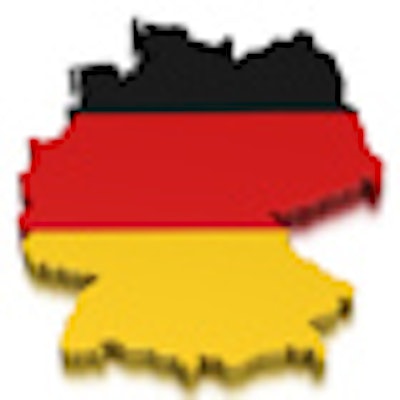
A new study shows 40% of all breast cancers size T2 to T4 diagnosed in first-time screening participants in the largest German federal state during a two-year period were interval cancers. This study was also the first to determine the state's interval cancer rate in the German mammography screening program.
In the country's most populated region, North Rhine-Westphalia, the first screening units of the country's mammography screening program became operational as part of routing care on 24 October 2005. By 11 August 2008, all 23 screening units planned in the region were up and running. Comprehensive implementation was completed on 23 December 2009.
"In order to obtain initial evidence of the efficacy of the breast cancer screening program even before an expected long-term reduction in the breast cancer mortality rate occurs, the EU guidelines recommend that surrogate parameters be assessed and evaluated," wrote Dr. Oliver Heidinger, manager of the Epidemiological Cancer Registry North Rhine-Westphalia, and colleagues in Deutsches Ärzteblatt International (16 November 2012, Vol. 109:46, pp. 781-787).
One of the parameters is the rate of interval cancers and their tumor stages. Interval cancers are detected independently of the cancer screening program in the interval before the next screening (24 months) in participants who had negative screening mammography results. Heidinger and colleagues sought to evaluate the efficacy of the mammography screening program in Germany by identifying the interval cancers.
Among the 878,764 women with negative screening mammograms in the first screening round, 2,036 (23.2 per 10,000) developed an interval cancer, according to the authors. These interval cancers accounted for 40% of all T2 to T4 breast cancers occurring in first-time participants in the screening program in the two years after screening.
The relative rate of interval cancer compared with the background incidence of breast cancer before introduction of the screening program was 27% in the first year and 58% in the second. Screening detected 78% of all breast cancers that occurred during a maximum of two years after screening.
Comparison with the detection rates of initial screening in other European countries shows the detection rate of the mammography screening program implemented in North Rhine-Westphalia to be relatively high: 81.0 per 10,000 women, the authors wrote.
"This corresponds to 3.01 times the background incidence rate, meeting the criteria stated in the European guidelines," Heidinger and colleagues wrote. "It should also be borne in mind that the German mammography screening program was launched later than those of other countries (October 2005), when the background breast cancer incidence rate in the target population was already high."
The background incidence rate was due in part to intense early diagnostics outside an early detection program before the mammography screening program was implemented, which means that although the detection rate at screening is high by international standards, it only just meets the European guidelines' requirement for its relationship to background incidence. Also, the incidence rate of breast cancer in the target group has been falling for several years independently of screening, which is in part thought to be due to fewer postmenopausal women taking hormone replacement therapy.
"The absolute interval cancer rate in North Rhine-Westphalia is higher than current findings from the pilot mammography screening program in Lower Saxony and the mammography screening programs in the Netherlands, the U.K., and Europe as a whole," the authors wrote. "However, the relative interval cancer rate in relation to the annual background incidence rate was only 27% in the first year following a negative screening result, and 58% in the second year."
Other European programs had rates of 29% in the first year and 63% in the second year, although the European guidelines stipulate values of less than 30% and less than 50%, respectively.
"It should not be overlooked that the percentage of interval cancers that are in situ tumors, which, as in other European countries, is relatively high, may be largely caused by the regional popularity of spontaneous or 'gray' screening," the authors notes. "These tests, which are not part of the screening program and may also include radiation-free ultrasound examination of the breast, have a significant effect on the detection of asymptomatic cases that would otherwise not be diagnosed until the next scheduled screening."
Limitations of the study include the following:
- Complete breast cancer data were obtained sooner in Westphalia-Lippe than in North Rhine. The somewhat lower interval cancers rates in North Rhine may have been the result of slight initial underreporting.
- If individual screening participants moved away from North Rhine-Westphalia during the two-year follow-up period, this might result in underestimation of interval cancer rates.
However, the official annual rate of women between the ages of 50 and 69 moving away from North Rhine-Westphalia between 2005 and 2010 was only 0.58% on average, so a low rate should have only a minimal effect on calculated interval cancer rates.
"In North Rhine-Westphalia, population-based cancer registry data have allowed reliable interval cancer rates for the German mammography screening program to be determined for the first time," the authors wrote. "They have also made a further important surrogate parameter for evaluation of the program's efficacy available."
The interval cancer rates are accurate because they have been calculated on the basis of a very high number of screening participants.
"Detection rates at screening, interval cancer rates, and the resulting program sensitivity all compare favorably with findings from other European countries," Heidinger and colleagues concluded.



















